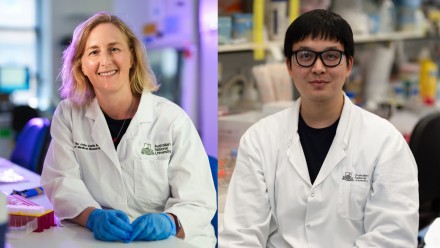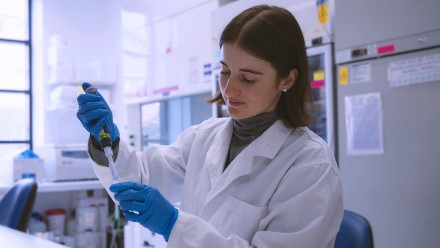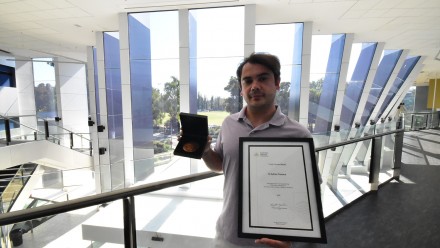Generating CRISPR mouse models for neurodevelopmental disorders
Dr Paul Thomas, Director, SA Genome Editing Facility¸ University of Adelaide and South Australian Health and Medical Research Institute.
CRISPR genome editing technology enables targeted genetic modification of virtually any species with unprecedented efficiency. For biomedical research, CRISPR technology offers unparalleled opportunities to develop accurate and sophisticated cell and animal disease models using virtually any species or cell type. Importantly, CRISPR can also be used to modify the human genome in vivo, enabling functional correction of disease-causing mutations for precision medicine applications. Prof Thomas has generated over 60 mutant mouse lines using CRIPSR. His presentation will describe his recent research on mouse models of genetic epilepsy and intellectual disability that reveal new insights into the pathological mechanism and developmental origin of these debilitating conditions.
Prof Thomas completed his Ph.D. at the University of Adelaide in 1994. He then moved to the National Institute for Medical Research (London) and completed a 3 year post-doctoral position with the late Dr. Rosa Beddington, who was a world-leader in the field of developmental biology. In 1998, he returned to Australia with the support of a NHMRC Florey Fellowship and established an independent research group at the Murdoch Institute in Melbourne. In 2006, he moved to the University of Adelaide and in 2008 was awarded a prestigious Pfizer Australia Research Fellowship. In 2014 he was promoted to full Professor and established the SA Genome Editing (SAGE) facility. In 2018, he relocated to the South Australian Health and Medical Research Institute where he heads the Genome Editing Laboratory and SAGE facility. His research focuses on the development of CRISPR/CAS9 genome editing technology for a range of applications including generation and analysis of mouse models for neurodevelopmental disorders and synthetic gene drives for invasive pest suppression. He has published more than 80 scientific articles with >7,000 citations. His research is supported by the USA Defense Advanced Research Projects Agency (DARPA) and the NHMRC.












